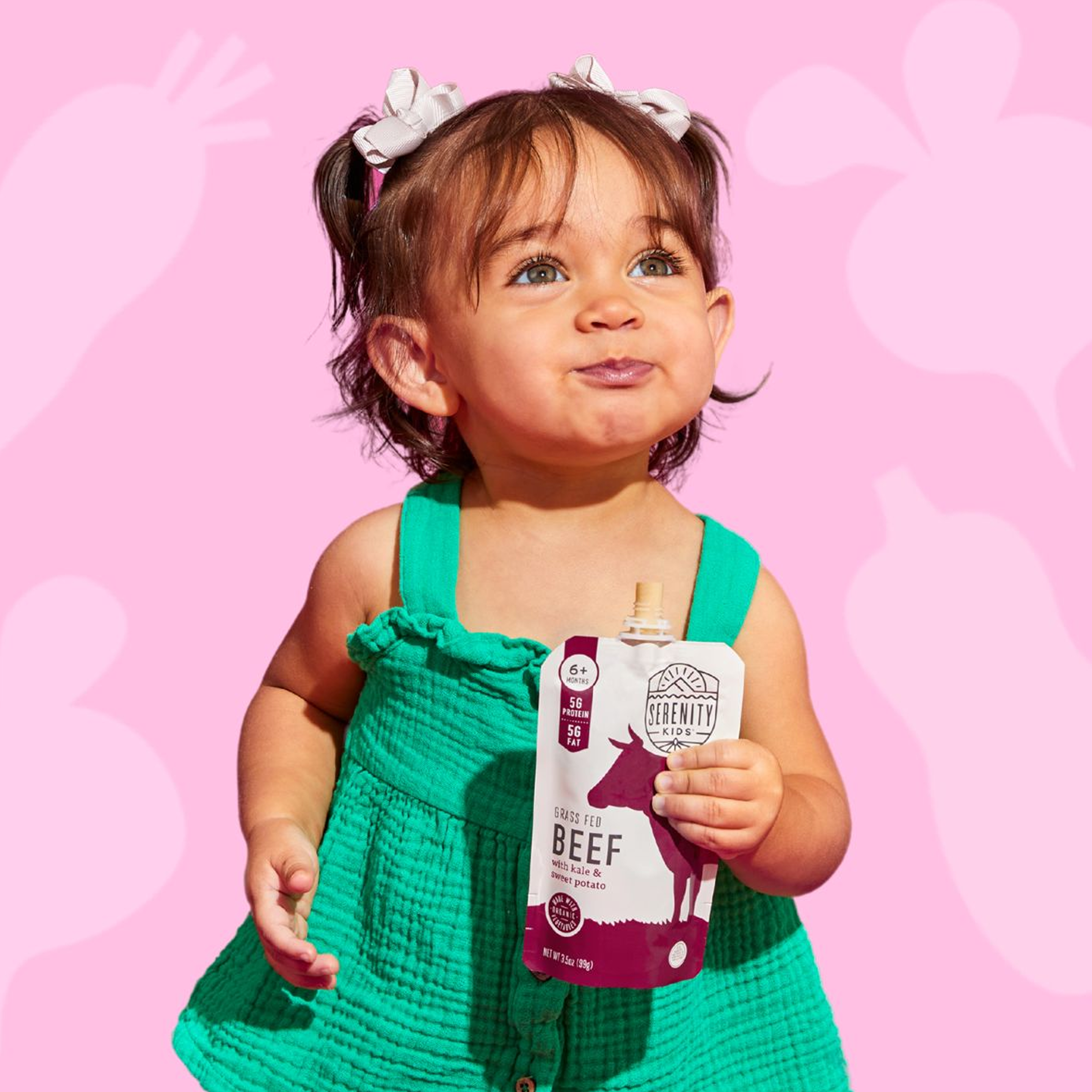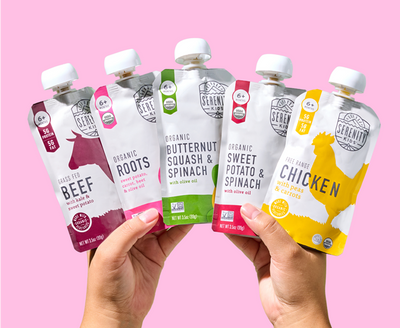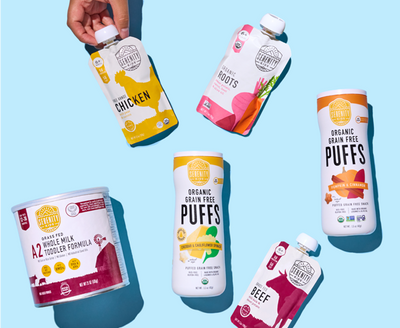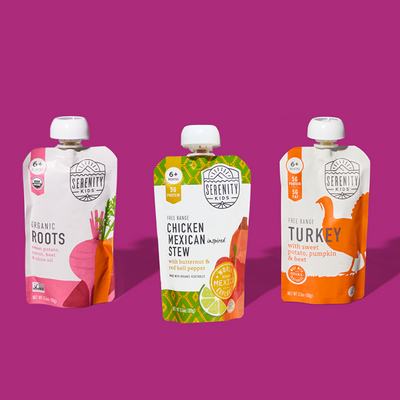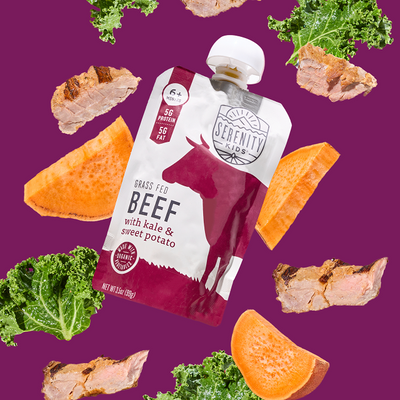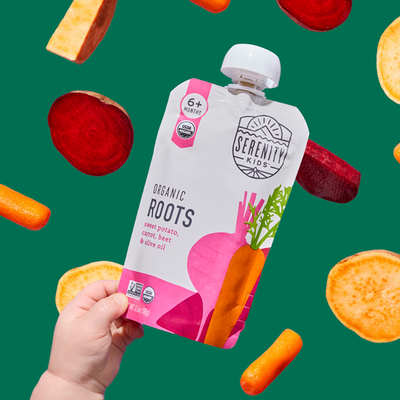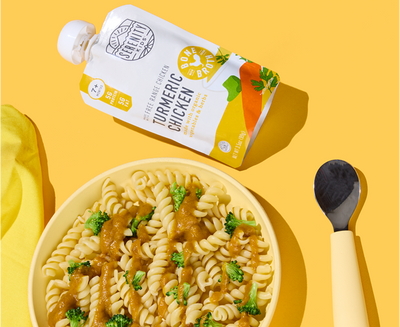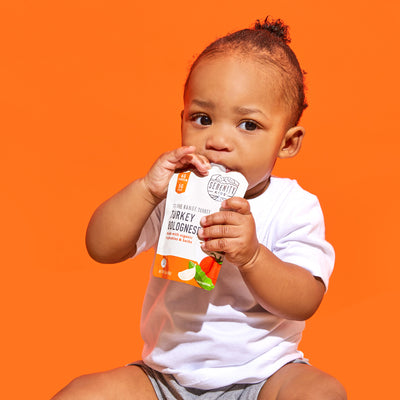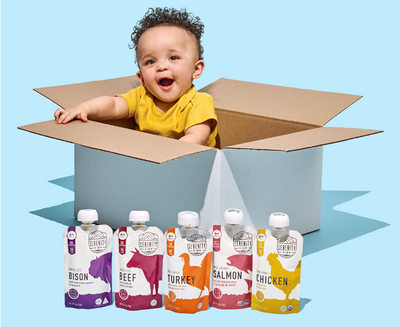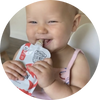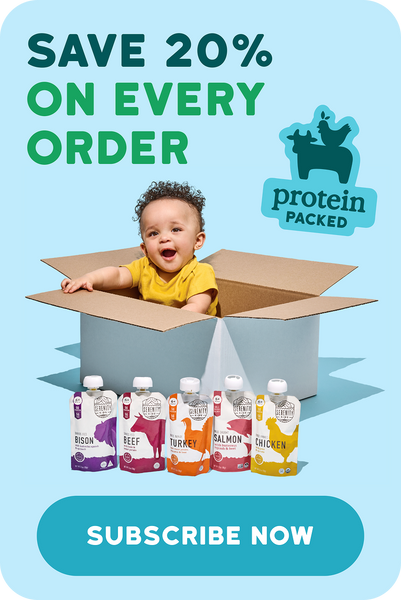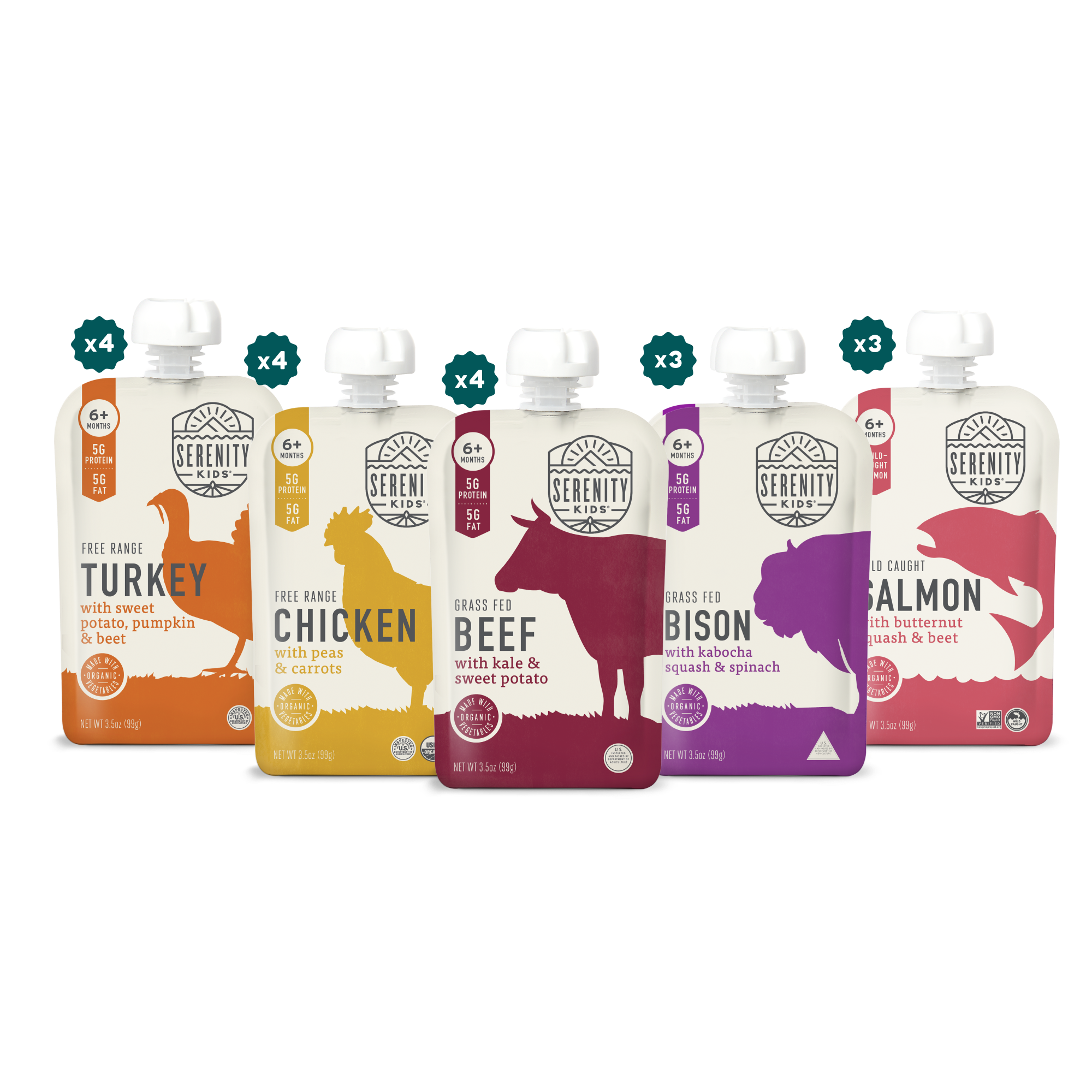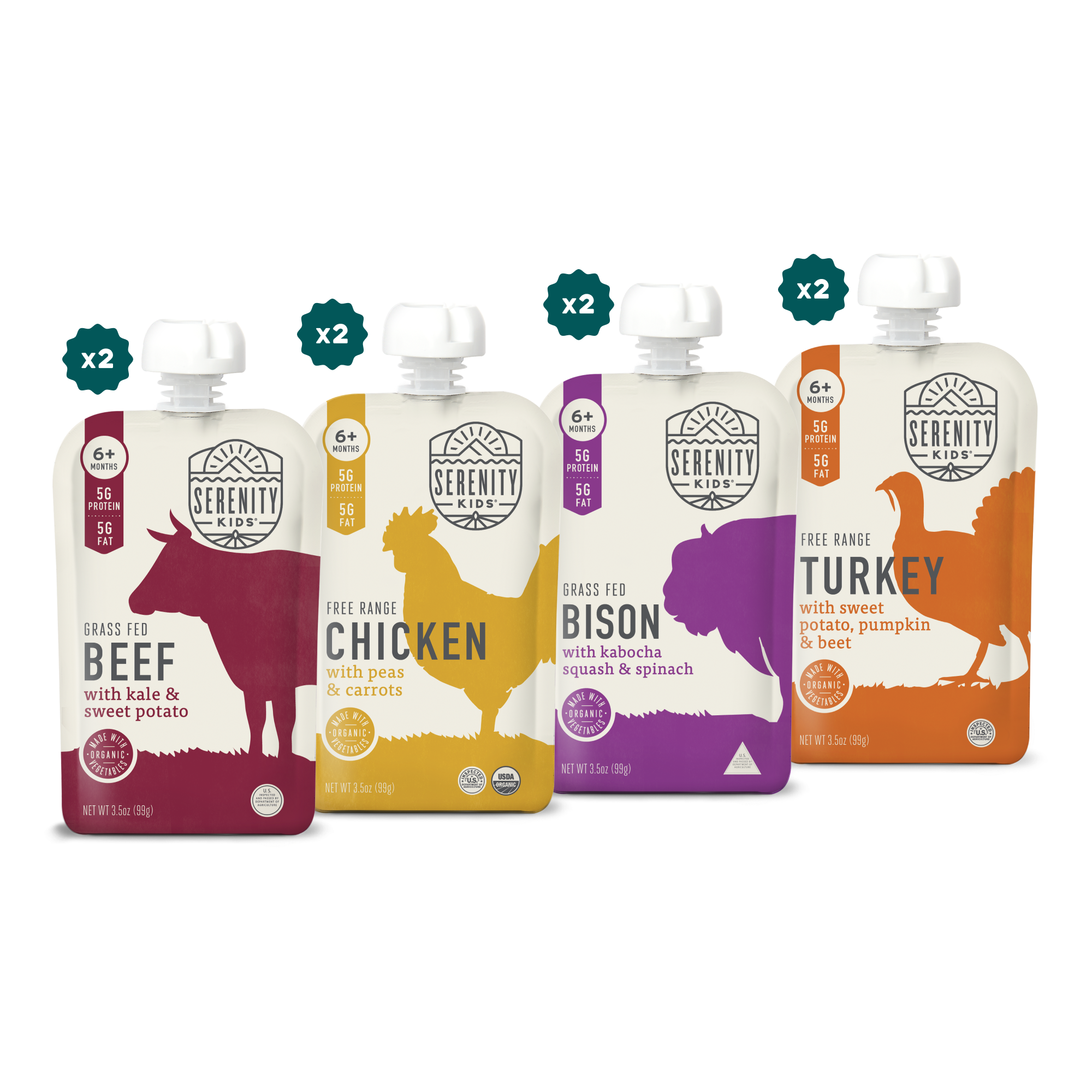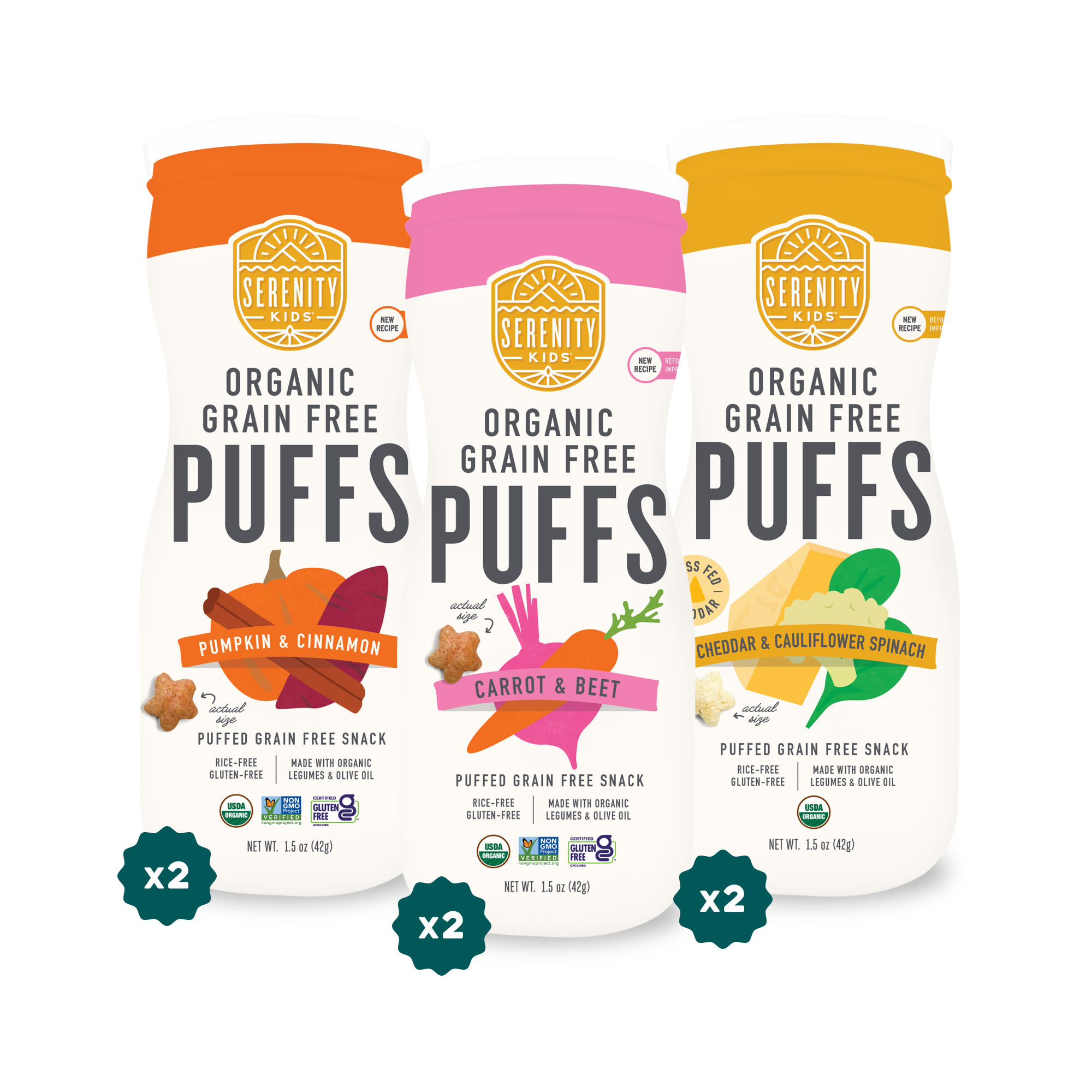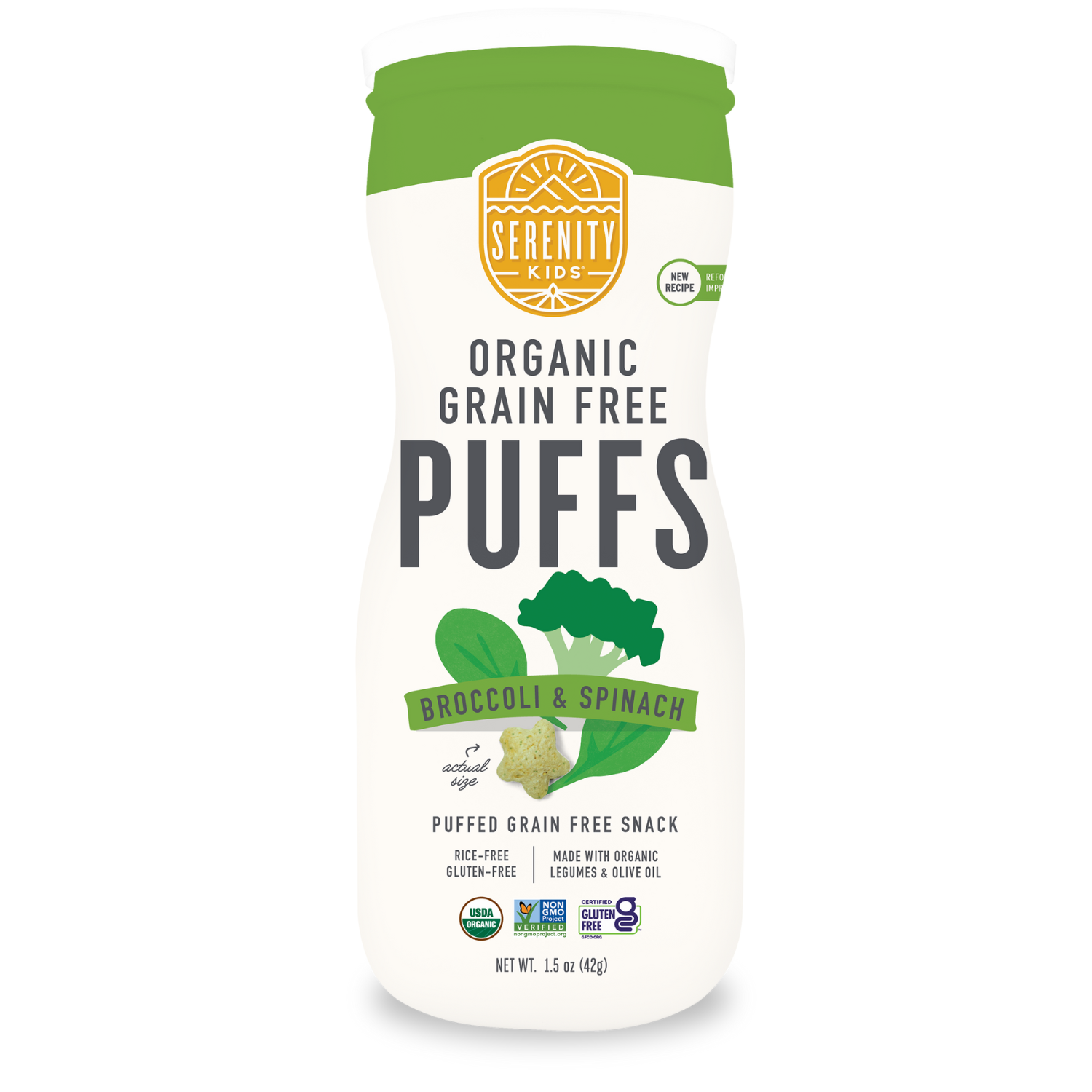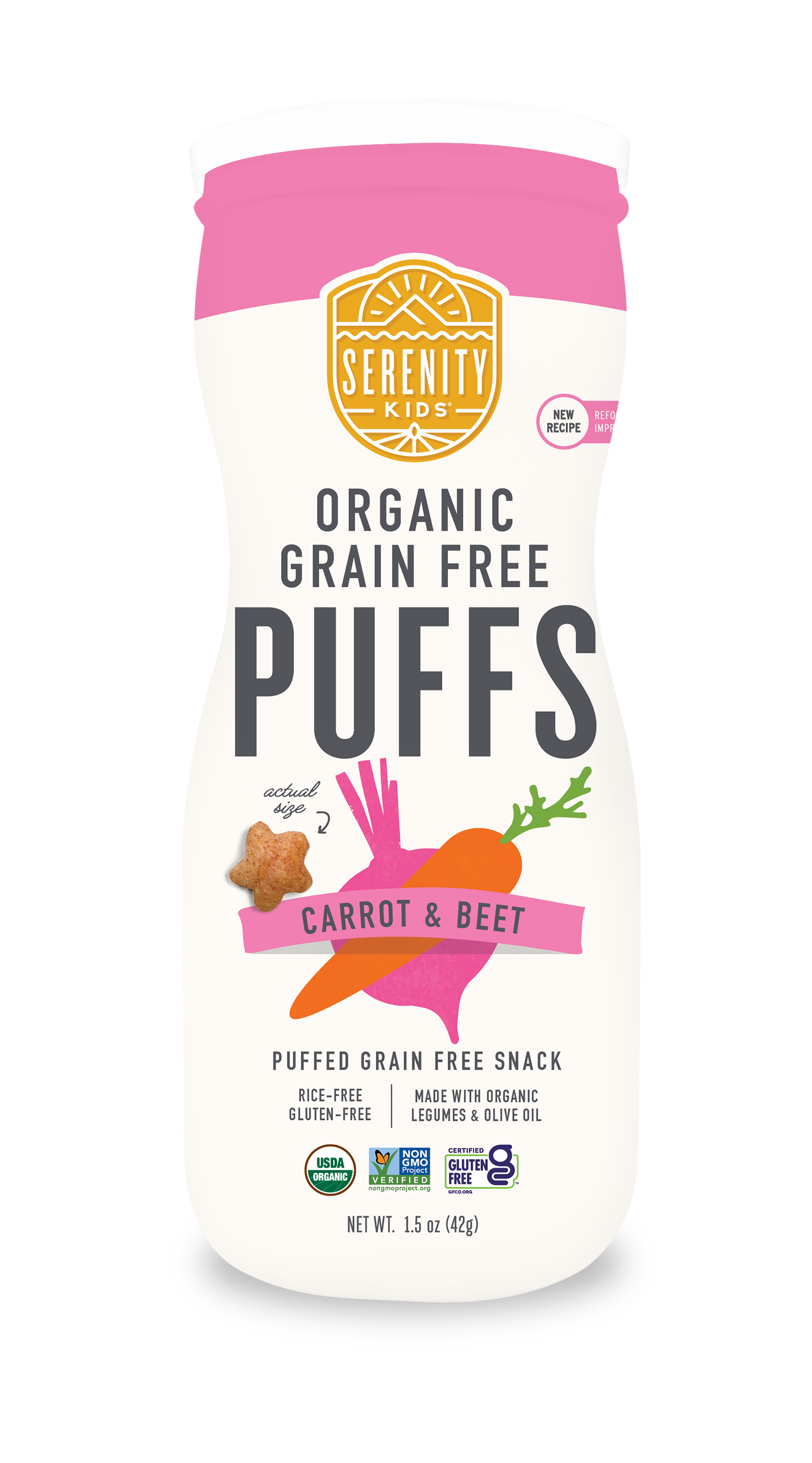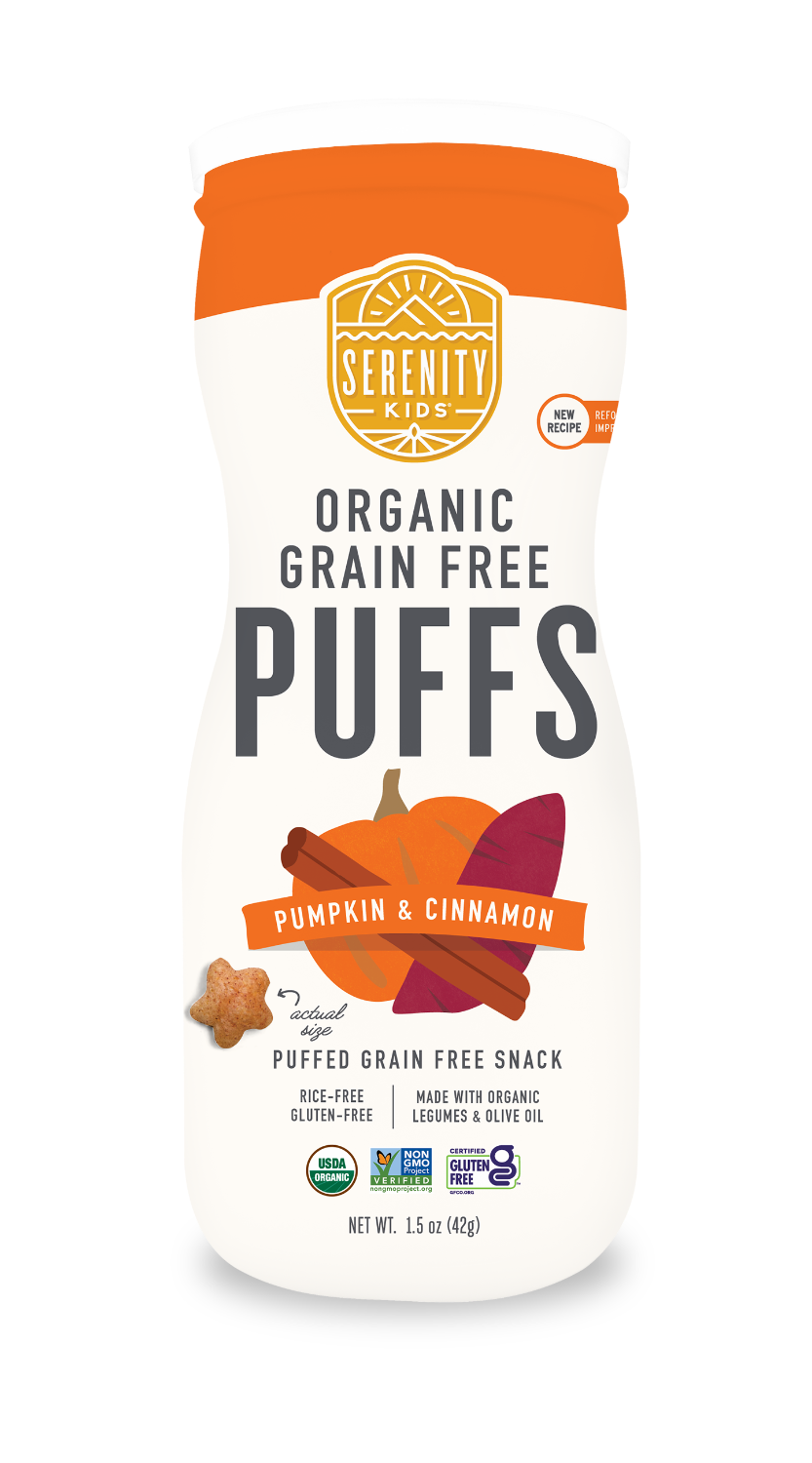TABLE OF CONTENTS
Written by Shelley Cameron
May 25, 2022
Toddler Formula vs Infant Formula: What Is The Difference?
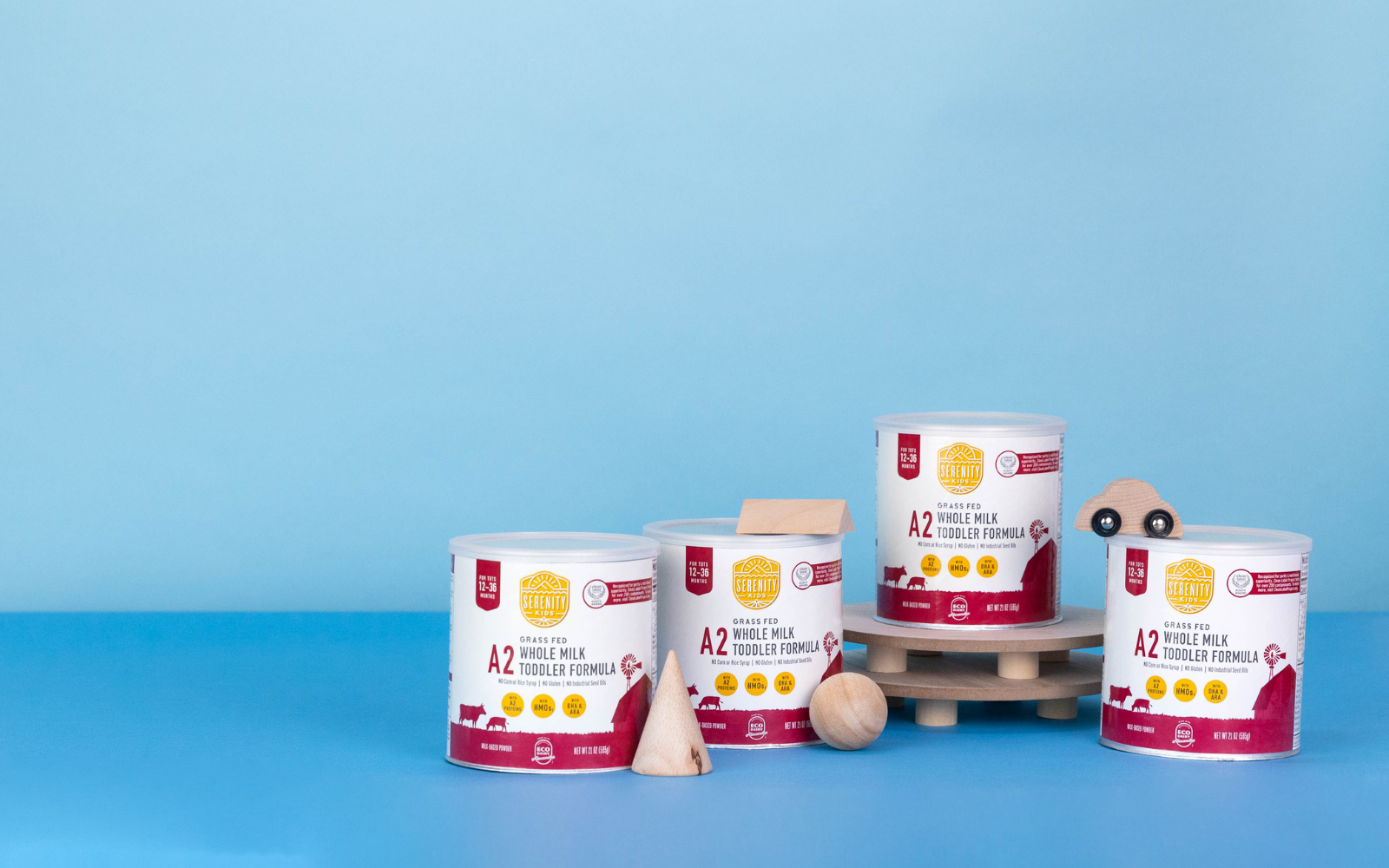
The Serenity Kids staff has been getting a lot of questions about our new toddler formula, so I want to address some of the most common ones here - from one caring parent to another, and from one passionate co-founder and CEO to an informed and curious customer.
Since we launched our Toddler Formula in June 2021, we’ve gotten a ton of questions from parents! Like: why is our formula classified as “toddler” rather than “infant”? Doesn’t the American Academy of Pediatrics recommend milk for babies after a year anyway? And can you give our toddler formula to your infant? Do we plan on ever making an infant formula?
These are all great questions, and all questions that had come up during our product development process. Trust me, as a mom myself who experienced a difficult breastfeeding journey, I wanted to create the highest-quality product that I would feed to my child.
I see you, I hear your concerns, and I want to help you understand each of our decisions and provide answers to your questions around why we have a toddler formula, not an infant formula. So that’s exactly the intent of this blog.
The Short Answer
Our toddler formula is for 12 months and up. It has not yet gone through the FDA evaluation process that is required for infant formula. Until that happens, this product is not recommended for under twelve months.
As with any new product introduction to your little one, consult with a healthcare professional. All content within this site is not intended as medical diagnosis or treatment and should not be considered a substitute for, nor does it replace professional medical advice, diagnosis, or treatment. If you have any concerns or questions, you should always consult with a physician or other healthcare professional.
Try this healthy toddler smoothie
The Long Answer
Infant formula is one of the most tightly regulated food products in the US and is governed by the Infant Formula Act of 1980, one of the most specific, detailed acts passed by Congress. For a product to be approved as an infant formula by the Food and Drug Administration (FDA) it must meet these stringent requirements:
1. Nutrients: Must include 29 nutrients and vitamins within a range of established minimum and maximum amounts. These requirements relating to nutrient content, nutrient quantity, and nutrient quality control can be found in Section 350a of Chapter 9, Subchapter IV of the US Code. Our toddler formula actually meets these nutrient range requirements, and we spent years researching and sourcing to choose the optimal form of each nutrient versus lesser quality forms from other brands
|
29 Required Nutrients Required in Infant Formula |
Serenity Kids Source(s) |
Other Toddler Brands Typical Source(s) |
|
Protein |
A2 beta-casein protein from whole milk, organic whey protein concentrate |
Nonfat milk (naturally occurring milk fat is stripped away and then industrial seed oils are added for fat content) |
|
Fat |
Grass-fed organic milk fat, organic extra virgin olive oil, organic coconut oil, organic palm oil, organic cocoa butter |
Sunflower oil, canola oil, safflower oil, soy oil |
|
Additional Essential Fatty Acids (DHA, EPA, ARA) |
Algal oil, egg lecithin, sunflower lecithin |
Soy lecithin, Schizochytrium oil, Mortierella Alpina Oil |
|
Vitamin A |
Retinyl palmitate (active vitamin A) |
Beta carotene (must be converted, generally inefficient) |
|
Vitamin D |
Vitamin D3, Vitamin D2 |
Vitamin D3, Vitamin D2 |
|
Vitamin K |
Kelp powder (K2), Phylloquinone (K1) |
Phylloquinone (K1) |
|
Vitamin E |
Vitamin E Acetate |
Vitamin E Acetate |
|
Vitamin C |
Ascorbic Acid, Ascorbyl Palmitate |
Ascorbic acid |
|
Vitamin B1 |
Thiamine Mononitrate |
Thiamine Mydrochloride (less stable) |
|
Vitamin B2 |
Riboflavin |
Riboflavin |
|
Vitamin B6 |
Pyridoxine Hydrochloride |
Pyridoxine Hydrochloride |
|
Vitamin B12 |
Methylcobalamin |
Cyanocobalamin (synthetic form that contains a cyanide molecule that must be removed by the body; the remaining B12 must be converted to the active form) |
|
Niacin |
Niacinamide |
Niacinamide |
|
Folic Acid |
L-methylfolate |
Folic acid (synthetic and must be converted in the body into the active form - L-methylfolate, is also inflammatory for those with MTHFR mutation, about half the population) |
|
Pantothenic acid |
Calcium Pantothenate |
Calcium Pantothenate |
|
Biotin |
Biotin |
Biotin |
|
Choline |
Choline Bitartrate |
Choline Chloride |
|
Inositol |
Inositol |
Inositol |
|
Calcium |
Calcium Carbonate |
Calcium Carbonate, Calcium Phosphate |
|
Phosphorus |
Dicalcium Phosphate |
Potassium Phosphate |
|
Magnesium |
Magnesium Phosphate |
Magnesium Chloride, Magnesium oxide |
|
Iron |
Ferrous Sulfate |
Ferrous Sulfate |
|
Iodine |
Kelp powder |
Potassium Iodide |
|
Zinc |
Zinc Sulfate |
Zinc Sulfate |
|
Copper |
Copper Sulfate |
Copper Sulfate |
|
Manganese |
Manganese Sulfate |
Manganese Sulfate |
|
Sodium |
Sodium Chloride |
Sodium Chloride |
|
Potassium |
Potassium Chloride |
Potassium Phosphate, Potassium Hydroxide |
|
Chloride |
Sodium Chloride and Potassium Chloride |
|
2. Manufacturing Assurances: Infant formula manufacturers must provide assurance that the formula is manufactured under current good manufacturing practices including quality control procedures. Rest assured, manufacturing facilities, like the one we use for the Serenity Kids toddler formula, follow strict rules established by the FDA about how the product is produced, packaged, and labeled. Every lot is quality-control tested for pathogens like the ones that caused the voluntary Similac recall. We refuse to cut ANY corners, ever.
3. Infant Feeding Studies: The FDA requires clinical studies of infant formula that “demonstrate that a formula supports normal physical growth in infants when fed as a sole source of nutrition by conducting, in accordance with good clinical practice, an adequate and well-controlled growth monitoring study of the infant formula.” It must also follow regulations of human subject protection, additional safeguards for children in clinical investigations of FDA-regulated products, and institutional review boards.
- A quick look at the study requirements will show you that the time and expense associated with conducting these studies makes getting an infant formula approved by the FDA a huge barrier to entry for small startup companies.
- We have not begun the FDA’s feeding study process for our formula. It takes three to five years and a tremendous amount of resources that we are working to secure.
-
We modeled our Grass Fed A2 Whole Milk Toddler Formula based upon European Union Standards, which are amongst the strictest in the world.
The Legal Landscape of Formula in the US
The reality is, formula is an inherently risky market. I get this, and you probably do too. We all want the best for our babies (it’s why we started our own baby food company, after all!). So when it comes to the legal landscape of infant formula, safety is a top priority, and that means regulations are strict. Here’s why we made a toddler formula.
Why Not Just Give Whole Milk?
Another question we get is “can’t I just give my toddler whole milk?” In short, the answer is certainly, yes. Many organizations and health care providers recommend whole milk for toddlers aged 12 months and up. My toddler, however, has skin that breaks out when she drinks regular cow's milk.
The benefit of our A2 Whole Milk Formula is that it contains organic grass-fed A2 whole milk, which is nutritionally superior and can be relatively hard to find. PLUS we add a whole lot of other nutrients to support your child’s growth and development. In other words, with our formula your child gets the benefits of high-quality grass-fed A2 milk along with a number of other nutrients.
How Serenity Kids Toddler Formula Compares to Breastmilk
We also hear from many parents who cannot breastfeed or are considering weaning for a variety of reasons and are curious as to how our Grass Fed A2 Whole Milk Toddler Formula compares to the nutrient composition of breastmilk.
To be clear, we are raving fans of breastmilk! It is a truly magical food / drink that our formula (nor any other) could ever beat.
Because we know breastmilk is the ideal food for a small child, we went to great lengths to make our formula as close to breastmilk as we could get. We partnered with medical biophysicist Dr. Sarah Ballantyne to create the absolute best quality formula out there - one with organic, high-quality ingredients, and something without toxins or the cheap and low-quality ingredients found in other formulas.
Dr. Ballantyne studied 200+ research papers on breastmilk from all over the world to distill the ideal nutrient profile from breastmilk into a 4-page document: from fatty acid profile to fortifications. After mapping the nutritional profile of breastmilk, she then analyzed hundreds of ingredients to determine how to get the optimal form of each nutrient from food sources. We used her detailed research to create our recipe, and then brought that to a cutting-edge lab with a team of expert food scientists, and began sourcing our high-quality ingredients. The result was a powdered formula that is as close to breastmilk as possible.
We acknowledge that there are characteristics of breastmilk that simply cannot be re-created in formula. For example, we know breastmilk has the amazing ability to adapt its nutritional composition to a child’s specific needs. It also contains antibodies and has incredible healing and immune-boosting properties. In addition, we know nutrient composition of breastmilk (such as vitamin D) can vary widely depending on mama’s diet and lifestyle, and so a side by side nutrient comparison of our formula (or any formula) to breastmilk isn’t super meaningful.
Where does the Grass Fed A2 Whole Milk Come From?
The source of the milk is near and dear to my heart. I know most dairy farms aren’t great for the environment or for the cows themselves. So I was thrilled to find a regenerative dairy farm that produces organic, A2 whole milk! Nestled between towering coastal redwoods and the Pacific Ocean, you’ll find Alexandre Family Farm, which supplies the A2/A2 organic whole milk found in our A2 Whole Milk Toddler Formula.
Once we found the milk source, the last big piece of the puzzle was to find a factory to produce it. That might have been the toughest part because Big Formula uses most of the formula manufacturing capacity in the US.
But yet again, another miracle happened! I’m thrilled with our manufacturing partner who has a state-of-the-art factory and robust quality processes. The “sugar-free icing on the cake” is their shared mission to revolutionize the formula industry and offer healthier products for children.
We had many smaller hurdles with testing, producing, packaging, and eventually getting this product to market, and I’m happy to say those are in our rearview mirror.
Of course, the challenges and work were 100% worth it, because now we can honestly say our formula is more similar to breastmilk than any other formula on the market.
Shop Grass Fed A2 Whole Milk Toddler Formula
Our Commitment
Our commitment to you is and always will be to provide the most nutrient-dense foods for your little ones. We study the latest research on nutrition and infant and child development to create the best possible products that little ones love to eat and drink, but also convenient for parents.
The bottom line is that our formula is considered a toddler formula because while it contains the FDA’s 29 required nutrients for infant formula, it has not yet gone through the FDA evaluation process to be considered infant certified. Until that monumental day comes, we can only recommend our formula for children ages 12 months+, or as directed by a healthcare professional.
In the meantime, we are endlessly grateful for your support. We hope that you feel empowered to do your own research in comparing formula ingredients and consult with a health practitioner on what nutrients your unique little one needs at different stages of development. We think you’ll see that our Grass Fed A2 Whole Milk Toddler Formula is thoughtfully and intentionally designed based on extensive research and genuine passion.
From one mom to another, happy feeding!
Our toddler formula is intended for ages 12 months - 36 months. As with any new product/recipe/flavor introduction to your little one, consult with a healthcare professional. All content within this site is not intended as medical diagnosis or treatment and should not be considered a substitute for, nor does it replace professional medical advice, diagnosis, or treatment. If you have any concerns or questions, you should always consult with a physician or other healthcare professional.
You Might Also Like
· 1 min read · Recipes
· 7 min read · Education
